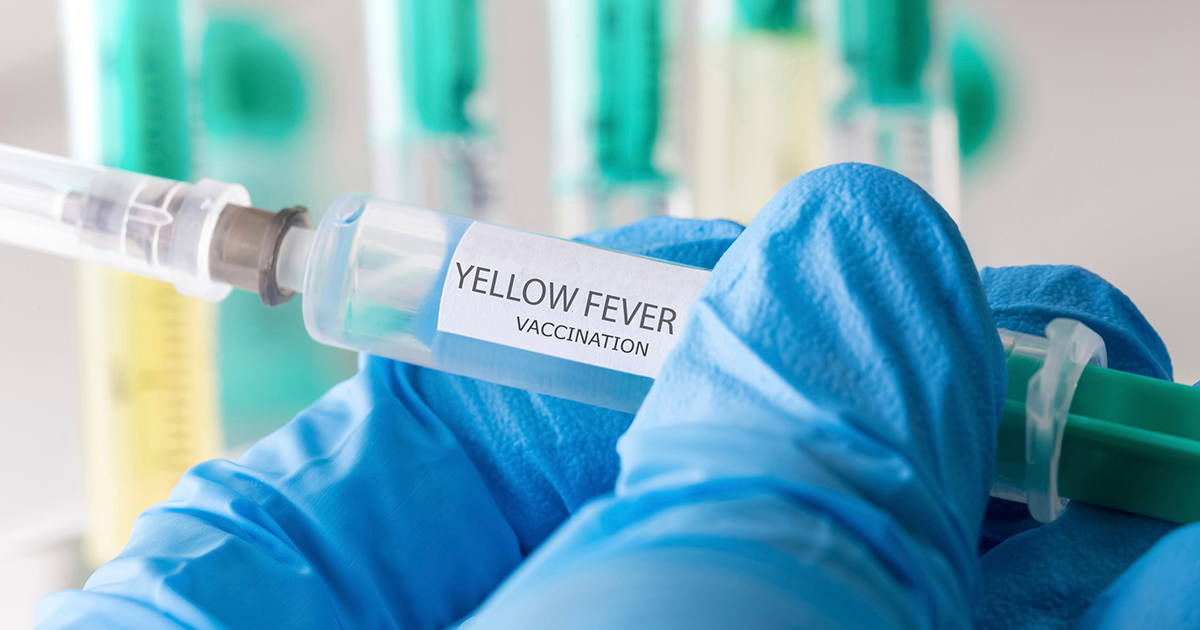Serious Illnesses You Can Get From Mosquito Bites
Approximately three thousand species of mosquitoes exist, but the most dangerous types are Anopheles, Culex, and Aedes. Although they are small, mosquitoes are one of the most dangerous animals in the world. Approximately one million individuals worldwide suffer from mosquito-borne illnesses every year. Mosquitoes carry feared diseases and parasites to humans, horses, and dogs. This is precisely why it is crucial for everyone to take the necessary precautions to protect themselves against mosquito bites. This typically includes using bug spray, putting up protective nets, and wearing protective clothing.
Get to know the serious illnesses individuals can contract from mosquito bites now.
Chikungunya

The most common symptoms of chikungunya virus are fever and joint pain, though affected individuals may also experience a rash, headache, muscle pain, and joint swelling. Outbreaks of chikungunya virus have occurred in various countries in Europe, Asia, and Africa, along with the Indian and Pacific oceans. In 2013, the virus was found on islands in the Caribbean for the first time. The good news is chikungunya virus is not usually deadly, though unfortunately, the joint pain associated with this illness may last for years, which can lead to chronic pain or disability. There is no vaccine to prevent the development of chikungunya virus, nor is there a treatment available for it. Thus, protective measures like wearing bug spray are particularly important.
Keep reading to learn about the next serious illness individuals can catch from mosquito bites now.
Dengue Fever

Approximately 400 million individuals are affected by dengue fever yearly. This illness is transmitted by female mosquitoes, and typical symptoms include high fever, severe pain behind the eyes, headaches, joint pain, muscle pain, bone pain, mild bleeding, and rash. An affected individual's nose or gums may also bleed easy. Bruising is also a common symptom. Dengue fever can be deadly due to complications with plasma leaking, respiratory distress, severe bleeding, organ impairment, and fluid accumulation. Like chikungunya virus, there is no vaccine or medication to protect individuals from dengue fever, so prevention from getting bitten by mosquitoes in the first place is key.
Get more details on the different illnesses individuals can get from mosquito bites now.
West Nile Virus

The West Nile Virus is a commonly known mosquito-borne disease that affected more than 2,200 cases in the United States in 2014, which included up to one hundred deaths. Approximately eighty percent of individuals infected do not develop any symptoms. The other twenty percent report symptoms of tiredness, fever, headache, body aches, vomiting, nausea, swollen lymph glands and rashes on the trunk of the body. In rare cases (less than one percent), individuals infected with West Nile Virus will develop neurologic diseases such as meningitis or encephalitis. Of this one percent, approximately ten percent may die.
Uncover more serious mosquito-borne illnesses individuals can contract now.
Yellow Fever

Yellow fever affects approximately 200,000 individuals per year and causes thirty thousand deaths worldwide, and approximately ninety percent of those cases occur in Africa. Though some individuals who contract yellow fever do not experience symptoms or illnesses, when symptoms do develop, they typically do so between three to six days following infection. Approximately fifteen percent of affected patients may develop a high fever, bleeding, jaundice, and shock or failure of several of their organs. Vaccinations against yellow fever are available and should be utilized when individuals are planning on traveling to high-risk areas, such as Africa and South Ameria. Travelers should receive this vaccination at least ten days before they travel. The vaccine, for most individuals, is good for life, though some may need a booster shot after ten years. All who receive their yellow fever vaccination will receive the appropriate documentation to prove they have, which must be shown to officials.
Learn more about mosquito-borne illnesses now.
Lymphatic Filariasis Or Elephantiasis

Lymphatic filariasis, which is also sometimes referred to as elephantiasis, is a mosquito-borne illness that impairs the individual's lymphatic system, and may cause the enlargement of different parts of the body, resulting in issues like pain and disability. Presently, approximately 886 million individuals in roughly fifty-two countries around the world are still at risk of Lymphatic filariasis and as such, require preventative chemotherapy to reduce and prevent the spread of this infection. Thankfully, the World Health Organization has been working diligently to combat this condition and have been relatively successful, with roughly 554 million individuals no longer requiring preventative chemotherapy.
Get more information about the variety of illnesses individuals can contract from infected mosquitoes now.
Malaria

Perhaps one of the most commonly known mosquito-borne diseases is malaria. Malaria parasites accumulate and multiply in the human liver and infect red blood cells. Approximately 198 million cases were reported worldwide in 2013. Of those cases, approximately 500,000 individuals died, most of whom were African children. Symptoms of malaria typically occur ten to fifteen days after being bitten and include headaches, vomiting, and fever. Malaria can be life-threatening if left untreated due to blood disruption to vital organs. While malaria is rare in the United States and Canada, it can be found in over ninety countries, including those in Africa, South America, Central America, Oceania, and Asia. SUb-Saharan Africa and parts of Oceania are the highest-risk areas for malaria.
While medication for preventing and treating malaria does exist, it does not always work as well as it should, and individuals must take precautions such as wearing lots of insect repellent and putting up mosquito nets.
Read more about serious mosquito-borne illnesses now.
Zika Virus

Zika virus, named after the Zika Forest in Uganda, was first discovered in 1947, with the first cases in humans emerging in 1952. Currently, countries in Asia, Africa, The Caribbean, South America, The Pacific Islands, Central America, and even in Mexico in North America, are considered areas with a risk of Zika virus. Zika virus is primarily spread through the bite of an infected Aedes mosquito, but can also spread through intercourse with an infected person, as well as from a mother to her unborn child. While many infected with Zika virus will not display symptoms, when symptoms do occur they include muscle pain, headache, rash, joint pain, conjunctivitis, and fever. Zika virus can also cause birth defects when the virus passes from mother to unborn child.
The virus will typically remain in the bloodstream for approximately one week. Though Zika does not often require hospitalization, it is still important to visit a doctor if Zika is suspected or travel to an area with risk of Zika recently occurred. There is currently no specific medication or vaccine for Zika virus, and the best protection remains preventing mosquito bites with bug spray, covering with clothing, and avoiding areas with lots of mosquitos.
Uncover more mosquito-borne conditions now.
Rift Valley Fever

Rift Valley fever is a virus first identified in the early 1900s. Most commonly found in domesticated livestock, it can also infect humans. The majority of Rift Valley fever cases have occurred in Africa, and outbreaks developed in Saudi Arabia and Yemen in 2000. Symptoms of this condition normally begin two to six days after infection, and they generally include fever, back pain, weakness, dizziness, and liver abnormalities; these often resolve within a week. Some patients with severe infections might experience blurry vision, and this could progress to vision loss. Blood tests can confirm the presence of Rift Valley fever, and treatment focuses on supportive care measures. Individuals who have experienced eye symptoms might need follow-up care.
Discover more conditions mosquitos can cause now.
Types of Encephalitis

Encephalitis is a condition that produces inflammation in the brain, and most cases are caused by a virus. Patients with this illness typically have mild symptoms similar to the flu, but the condition may sometimes be more severe and potentially life-threatening. The two major types of encephalitis are primary encephalitis and secondary encephalitis. Sub-varieties causes by infected mosquitos include Eastern Equine, Japanese, LaCrosse, and St. Louis encephalitis.
Primary encephalitis occurs when the brain is directly infected, and secondary encephalitis develops when the immune system overreacts to an existing infection by attacking healthy brain cells as well as the infected area. Secondary encephalitis may start two to three weeks after the initial infection. Individuals with this condition might experience fatigue, headaches, muscle aches, and fever, and they could develop seizures, confusion, speech difficulties, or loss of consciousness in more severe cases. To diagnose encephalitis, doctors use MRI or CT scans, and patients may need to have a lumbar puncture, an electroencephalogram, and blood or urine tests. In rare cases, a brain biopsy might be necessary.
Treatment for mild encephalitis normally consists of bed rest, hydration, and over-the-counter pain relievers to ease fever and headache. Patients might need to take antiviral drugs such as acyclovir, foscarnet, or ganciclovir. Individuals who have severe encephalitis generally need treatment in an intensive care unit, and they are often given intravenous fluids, anticonvulsants, and anti-inflammatory medications. These patients may also need breathing support through supplemental oxygen or ventilation, and they will be placed on monitors that check their cardiac function and respiration. Physical therapy, speech therapy, and occupational therapy are recommended for patients who experience long-term complications from encephalitis, and some individuals may also wish to have counseling.
Keep reading for more on conditions mosquitos can cause now.
Tularemia

Tularemia, sometimes known as rabbit fever, is caused by a bacteria known as Francisella tularensis. The disease is common in rabbits, sheep, and birds, and it can be transmitted to humans through a bite from an infected deer fly or tick. The illness is also spread by touching contaminated surfaces, and it can be contracted if an individual inhales the bacteria from the soil. Tularemia is most frequently seen in rural areas, and it can remain in soil and on surfaces for weeks. Patients with this condition may experience fatigue, headaches, fever, swollen lymph nodes, and ulcers on the skin or the inside of the eyelids. Individuals with the ocular form of tularemia might have a sensitivity to light and eye pain or swelling of the eyes. To diagnose tularemia, doctors perform tests to check for the presence of specific bacteria, and patients might need to have a chest x-ray to detect pneumonia or other potential complications. Antibiotics are the standard treatment for tularemia.
